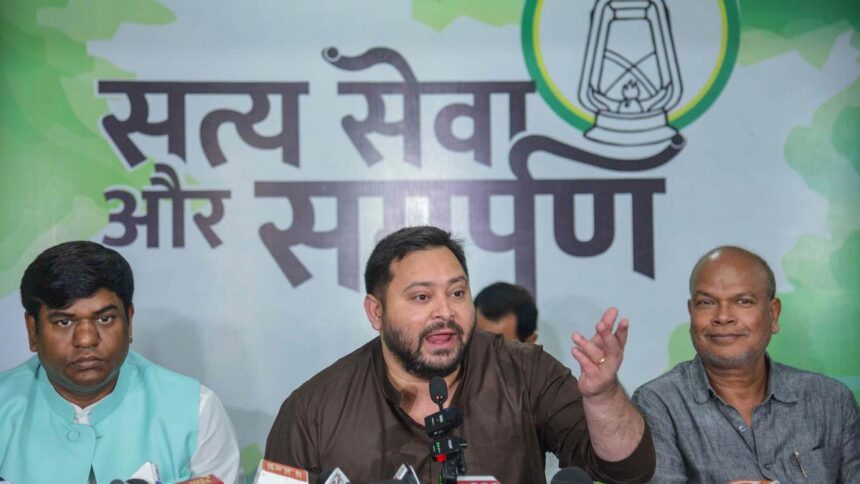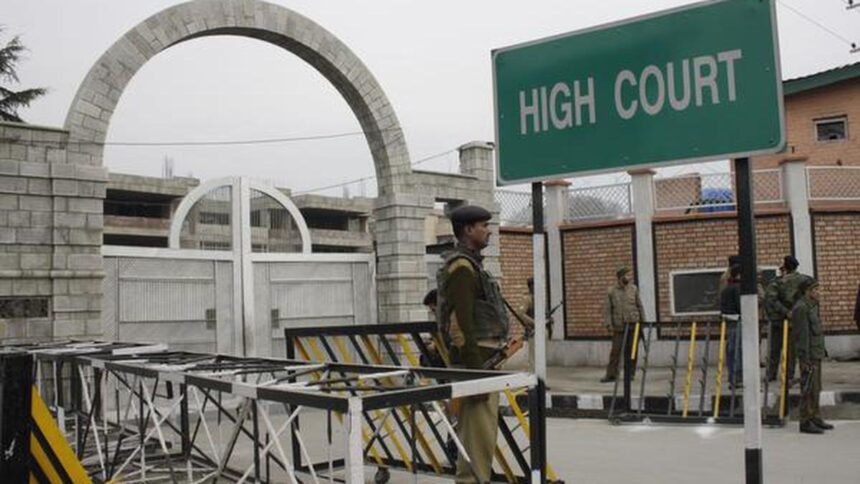
Lok Sabha LoP and Congress MP Rahul Gandhi speaks to the media after being detained by police during the INDIA bloc leaders protest march to the Election Commission, in New Delhi on August 11.
| Photo Credit: ANI
The story so far: Along with the allegations of ‘vote theft’ by the Congress, Leader of the Opposition Rahul Gandhi has demanded that “machine readable” voter rolls be made available to all political parties by the Election Commission (EC).
How are voter rolls shared?
Electoral rolls are the authoritative list of who is and isn’t allowed to vote in India, and they are continuously updated when newly eligible voters register to vote, change addresses, or become ineligible. Voter rolls are prepared under the EC’s authority by district level officials, who have access to ERONET, a digital application used by the EC to process applications for new additions to the voter list, or deletions. The EC has access to the full repository of data on every voter in India. They make this data accessible by making ‘image PDF’ files available, or by handing out printouts to political parties and the general public. Voter rolls include a photo of all voters, but this photo is not included in the image PDF files that the EC has on its website. While these image PDF rolls can be scrutinised in theory, this can turn out to be a resource-intensive exercise in practice. India has over 99 crore voter roll entries as of this January, and spotting duplicates can be challenging unless a team of human reviewers has a long period of time, and a limited geographic sample. That was the case in the Mahadevapura constituency of Bengaluru, where the Congress was able to spot 11,965 duplicate entries.
However, if ‘text PDF’ files are made available, the text can be indexed and searched by a computer making information formatting more straightforward. Without such machine-readable rolls, the Opposition argues, malfeasance and duplicate entries will be harder to spot. P.G. Bhat, a Bengaluru activist, has, prior to 2018, analysed machine-readable rolls to highlight irregular additions.
Why won’t the EC provide the same?
One year before the 2019 elections, the EC ordered State-level Chief Electoral Officers to stop uploading machine-readable rolls on their website. O.P. Rawat, the then Chief Election Commissioner, told The Hindu that this was done to prevent foreign countries from accessing voter roll data, which could expose Indians’ full names and addresses. In Kamal Nath versus Election Commission of India, the Supreme Court in 2018 refused to compel the EC to provide machine-readable electoral roll data. This was in spite of the EC’s own manual, which states that the “draft roll shall be put on [Chief Electoral Officers’] website in a text mode”. However, the court observed, “it may be added that if the petitioner so wants, he can always convert [voter lists] into searchable mode which, of course, would require him to put his own efforts.”
The main technology to convert scanned or un-searchable PDF documents into an analysable format is Optical Character Recognition (OCR), a decades-old technology. But there are points of friction that make such an analysis challenging: on the EC’s website, voter rolls for each assembly constituency are split into hundreds of “parts,” each a separate PDF document. Beyond the resource-intensiveness of obtaining the files, performing OCR on such a massive number of pages — over six crore for all the voter rolls in the country, based on a rough estimate — would cost around $40,000 per summary revision list (as per Google’s indicative AI Document pricing).
Can digital voter rolls spot fraud?
Mr. Gandhi has argued that having searchable copies would make spotting duplicate entries easier. Srinivas Kodali, an advocate and transparency activist, said that “there is a risk” in making rolls public, but that the EC’s conduct necessitated further transparency. “If the capability to OCR anyway exists with political parties, the question is whether we might as well make it public,” Mr. Kodali said.
Published – August 21, 2025 08:30 am IST




















